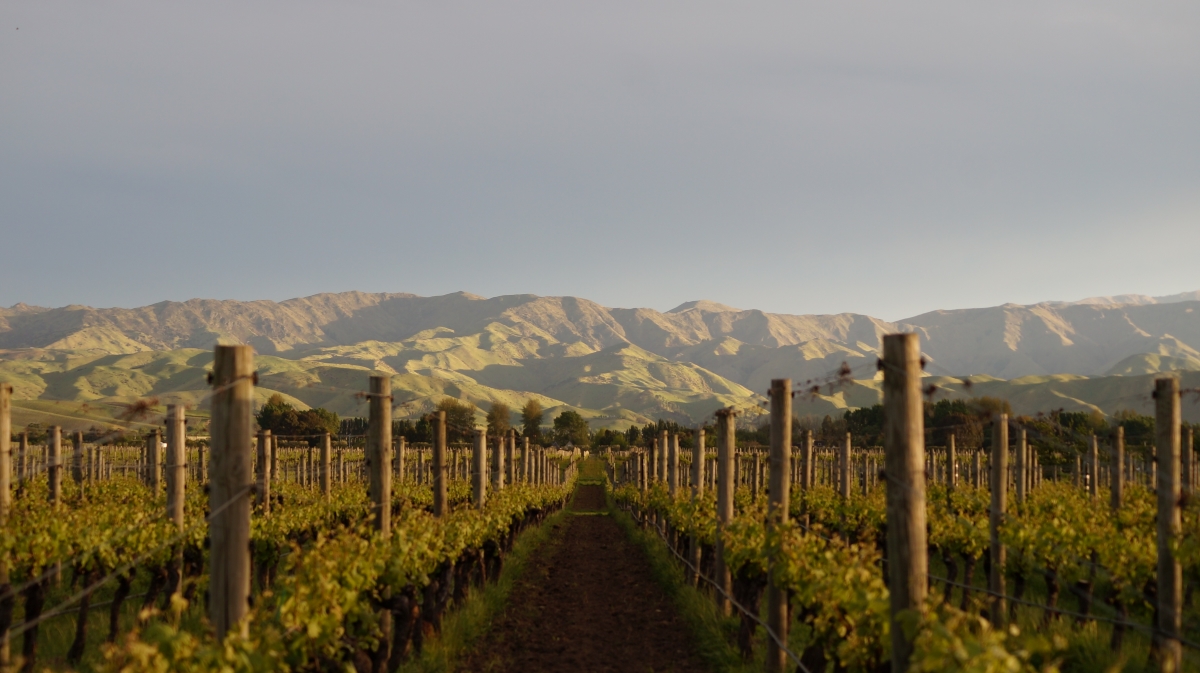Who goes to New Zealand’s South Island? There are several answers to this question – are you the type of Winetraveler interested in exploring world class wine regions on roads less traveled? How about adventure trekking on the Queen Charlotte or Routeburn tracks and the many tramping options found in Fiordland National Park such as the Milford Sound track? Are native traditions and history of interest?
The Maori culture is worth understanding and exploring. And, if you love Lord of the Rings, you’ll want to experience the settings of the books and films yourself. Regardless of your interests beyond wine travel, you’ll have easy access to jaw dropping pristine prehistoric natural beauty. There’s no way to avoid it.
This South Island travel guide and itinerary focuses specifically on enotourism and three wine regions on New Zealand’s South Island – Marlborough, Waipara and Central Otago. We’ve also included non-wine travel activities to make for a well-rounded trip.
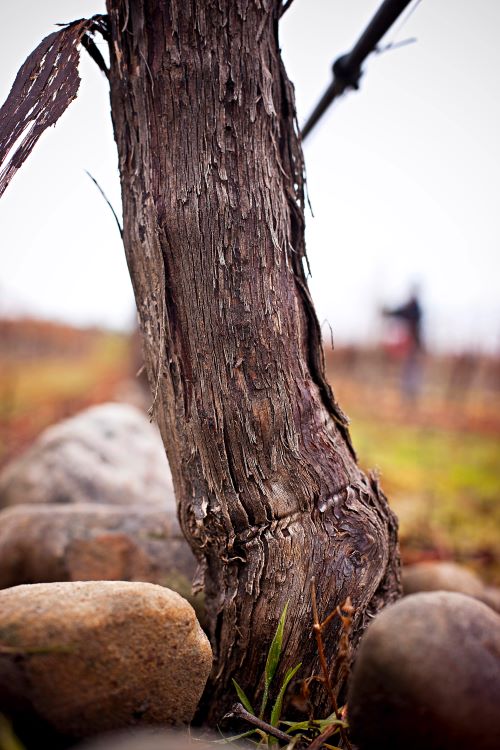
Travel Tips and Getting Around
Flights
Connecting through Auckland is standard, with quick connect flights to Christchurch that are frequent. Check and compare flight prices on Kayak, get yourself there and the adventure begins.
Rent a Car
Renting or sharing a vehicle is a must. Try Apex Car Rental Centre, off airport in Christchurch. They purchase lightly used vehicles that appear new, and offer competitive rates compared to Avis-Budget (who actually owns Apex). You can also compare other car rental options here.
Ideal Travel Times & Tips
The optimal travel months in the Southern Hemisphere typically fall between October and April, which is opposite to the peak season in North America. While New Zealand has a cooler climate, it offers a wide array of activities beyond simply sunbathing on beaches. Visitors often focus on outdoor adventures such as trekking, engaging in the local Maori culture, indulging in delicious local cuisine, and admiring the breathtaking natural beauty. So, although the timing may be different, visiting New Zealand during these months promises an exciting and diverse range of experiences for travelers seeking an unforgettable journey.
We asked Queenstown local and New Zealand wine writer and reviewer, Candice Chow for Winetraveler advice. “In general, cellar doors are smaller in scale, particularly in the South Island. After harvest, visitors may encounter winemakers pouring wines at the cellar doors, tending to vines or their garden, and sharing their first-hand stories. These experiences are priceless for wine lovers. It’s always a good idea to plan ahead to avoid disappointment. I would recommend booking an appointment advance, especially if they are popular.”
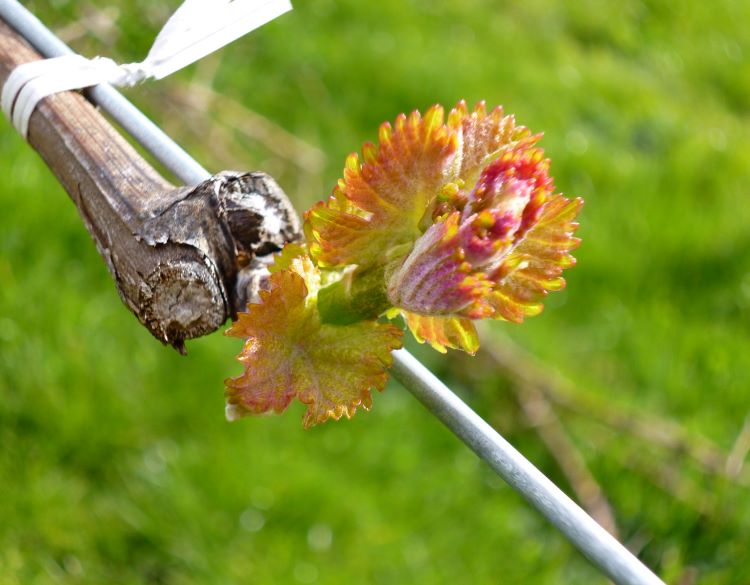
Guided Tours & Tickets for Experiences on the South Island
If you’d prefer to have a tour operator plan your visit to any of New Zealand’s wine regions, you can research, plan and schedule wine country visits with various companies. There are all-inclusive tour options, day trip options and specific activities you can arrange ahead of time. For a limited time, Winetraveler readers can get 15% off all tour bookings through our partner Viator in the South Island made through this website, using code WINETRAVELER15 at checkout.
Most experiences are led by locals, and you can try bucket list experiences like heli-hiking, glacier helicopter tours with snow landings, glow worm cave tours, vineyard day trip experiences (there are many, if you need help choosing one, email us at bookings@winetraveler.com), Lord of the Rings scenic trails, whale watching and beyond.
NOTE: Before traveling, visit the Embassy website for current visa and tourist information.
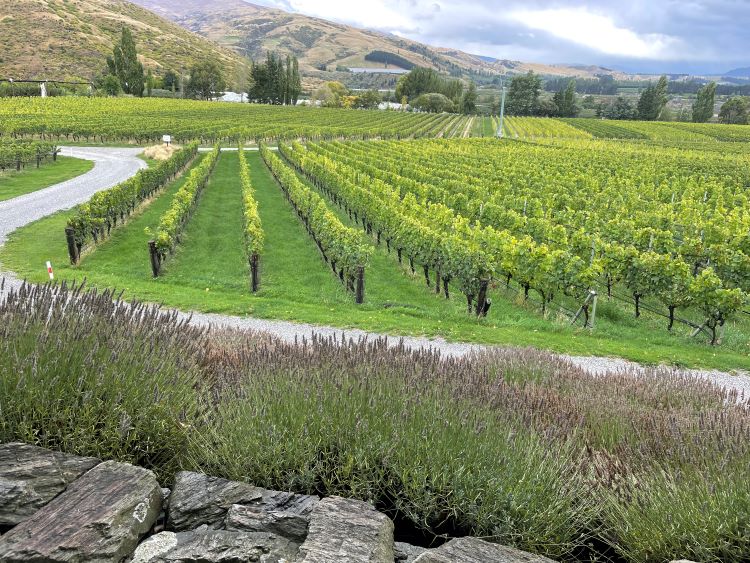
New Zealand Wine History
British and French missionaries planted the first vines in New Zealand in the early 1800s, primarily to supply British soldiers and visiting sailors. The industry didn’t really take off until the 1980s when the government changed the viticultural focus from low end, cheap wines (locally called Plonk), to high-end premium wines. Classic varietals like Sauvignon Blanc, Chardonnay, and Pinot Noir were planted. The Sunday Times of London validated the transition to premium wine production with high scores in one of its annual wine competitions. The rest is modern history.
Amber Silvester, New Zealand Winegrowers Association, shared this perspective:
“New Zealand’s wine regions are also some of the country’s most appealing tourist destinations, so it’s easy to combine passion with pleasure. Our wine communities are laser focused on international tourists, whether tasting in winery cellar doors, enjoying a long lunch in restaurants, or staying in luxury vineyard accommodations – the combination of people, location and climate make New Zealand’s wine regions truly special.”
The Sustainable Winegrowing New Zealand program is a wine world leader in promoting eco-friendly vineyard management and winemaking practices, and almost all wineries listed in this article produce sustainably.
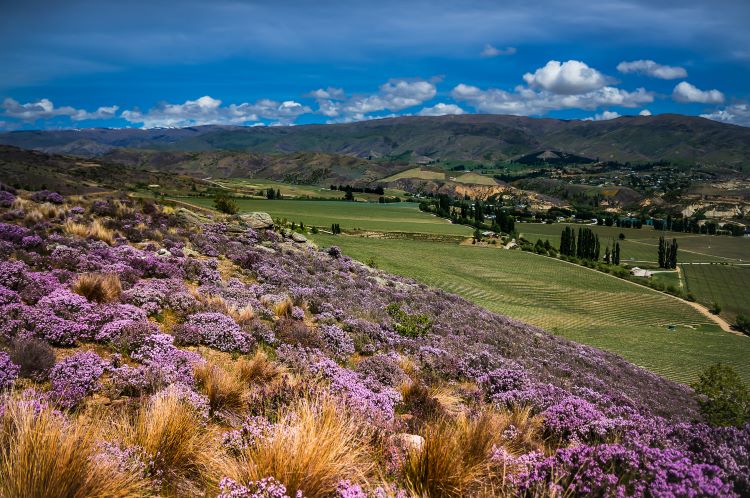
Suggested South Island New Zealand Itinerary
I generally don’t follow suggested itineraries, but I liked the one from our trip. You may too. These recommendations may not be the least traveled, but if you’ve yet to visit the South Island, this is pretty solid. The below section includes the broad route for navigating the South Island, what follows are much more specific recommendations for wineries, things to do and where to stay in each location/region.
Spend some time in Christchurch, first. It has recovered from the 2011 quakes and is the largest city on the Island. Depending on your budget and travel preferences, there are hotels and B&Bs for everyone and you can browse options right here.
From Christchurch, head north to the Waipara wine region, just 50 minutes away and arrive in time for lunch in wine country. Visit some cellar doors and stay overnight. Just 90 minutes northeast is some of the most beautiful shoreline on the east coast en route to Kaikoura, worth an overnight.
Ready for New Zealand’s largest and most famous wine region? 90 minutes northwest has you arriving in Blenheim and Marlborough country. If you’re into wine touring, tasting and hopefully buying, spend several days here.
Hate leaving all the good Sauvignon Blanc behind, but interested in some major side adventures? Depart from Picton, a beautiful seaside harbor town (and main ferry line landing from Wellington) to join a ferry hike-and-stay exploration of Queen Charlotte Track (QC Track in local parlance) for anywhere from 1-5 nights. Overnights are in charming digs, from hiking huts to 4-Star hotels with other hipster trekkers.
The next stage heads west to Abel Tasman, a national coastal park for more hiking. Use bayside villages Nelson or Motueka as gateways and your base for exploration of the park. Nelson is charming, artsy and good for the locally world-famous Havelock Mussels, so a few overnights there might make sense, depending on your interest in spending time in the park. There is also a wine region there to consider.
Heading south to the Wild West Coast and Hokitika (think Wild Foods Festival), and Franz Joseph (glacier walks), are excellent stopovers en route to Queenstown (five hours), the second largest city on the Island. Queenstown is the gateway to a third and final wine region Central Otago, lakeside Te Anau, and Milford Sound, which is a must for getting out on the water and possibly overnight.
What better way to wrap a grand island tour, before heading back to Christchurch (and possibly stopping at Lake Tecapo and Mt Cook National Park en route), than luxuriating in one of the most exciting and southern wine territories in the world – Central Otago – home to Pinot Noir, Chardonnay, Riesling and much more. Staying in Gibbston for several nights offers good central location, access to tasting, dining, writing, and loading up on vino before your return home.
How To Use This Guide
Now that you have the broad route of the South Island laid out for you, let’s get into the specifics of each destination. We break each location up into the ideal places to drink wine (sip), dine, stay and play (a broad range of activities outside of wine tasting).
You are reading “New Zealand South Island Itinerary and Travel Guide” Back to top
South Island New Zealand Winetraveler Destinations
Christchurch
Christchurch is a great starting point with easy access to both Waipara and Marlborough wine regions. It is referred to as “Garden City”, and for good reason. The 2011 quakes left Hagley Park and the Botanic Gardens largely unaffected, and served as an oasis for residents suffering from the devastation.
Don’t miss the New Zealand Garden section of the park, and its magical trails and the curious birds that inhabit it. For a broader view of the CBD (city business district), stroll the City Promenade along the winding Avon River.
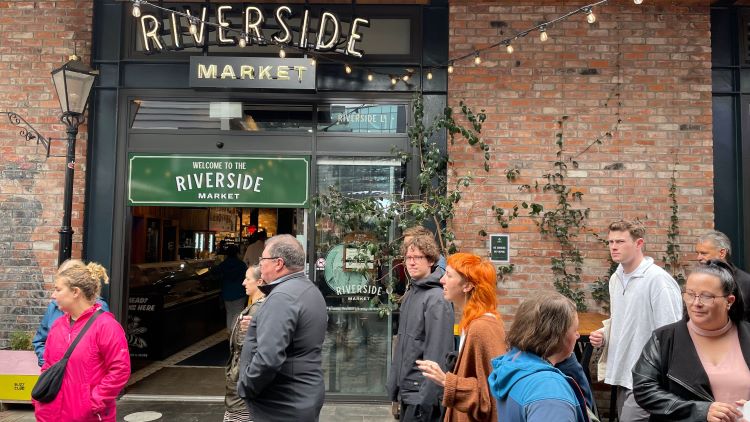
Sip
The Dirty Land, a.k.a. Dirty, on Victoria Avenue is a must visit cocktail lounge with a techno speakeasy vibe, and adjacent restaurant called Mexicano’s. Order food while you sip and have it brought to your table. If you’re up for a little mischief, visit Adam the proprietor and winemaker at Mischief Winery in the Riverside Market, and taste some classic Waipara region Pinot Gris, Pinot Noir and Sauvignon Blanc wines. If space is available at the tasting bar, you can bring your lunch or dinner along to pair with their wines.
Dine
Riverside Market is a multi-story food court with lots of international dining options, including beer, wine, spirits, sweets and a fresh food market. You’ll find another fun and possibly more local dining pod on High Street near the Cardboard Cathedral. Little High Eatery lies within its own developing entertainment district. If you’re interested in a sit-down meal, try the casual Jaba City and its locally sourced lamb and chicken dishes.
If you visit Hagley Park and the Botanic Gardens, carry on to the University of Canterbury for lunch at Cellar Door, likely the largest collection of Kiwi wines in the city and well thought out lunch dishes. If you’re looking for where the locals hang, continue along the Avon to Kilmore and Fitzgerald streets where you’ll find Little Poms Café, an upscale breakfast and lunch spot, and next-door Pomeroy’s Tavern for dinner.
Stay
Wyndham Garden Christchurch City is well located off Victoria Street, near the sleepy Casino and late-night party district. The studio rooms are like small apartments with mini kitchens, washer-dryers, etc.
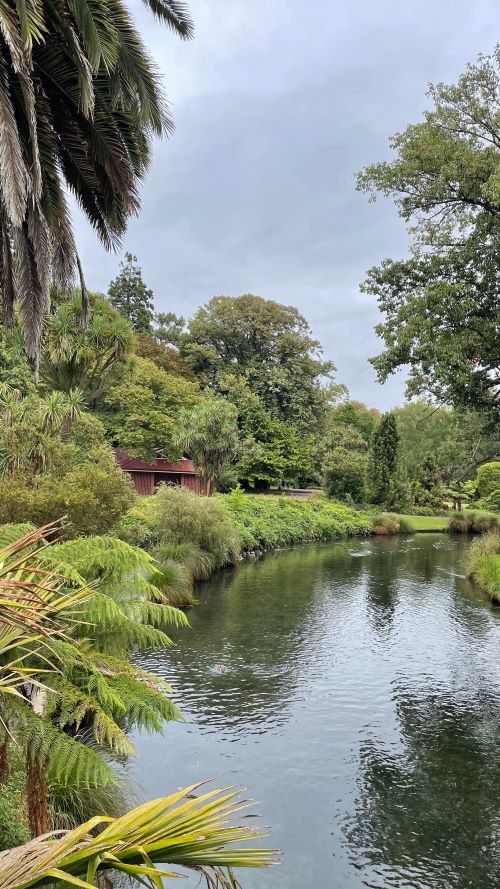
Play
Spend as much time as possible in Hagley Park and the Botanic Gardens. You can connect to the park on the city promenade which runs along the Avon River. Exit the park and visit the former University of Canterbury, now the Arts Centre. Nearby on the Avon River you’ll find Punting on Avon for boat rentals and sightseeing. Shopping in the CBD at City Mall is worth a visit if you’re to drop a quid or three.
Don’t miss the Cardboard Cathedral, constructed after the 2011 earthquake on the site of St. John’s Parish, and now operating as a transitional Anglican Church. “Punting” i.e., rowing or being rowed on the Avon River makes for a fun outing. You can depart from the Boat Shed in the CBD.
Waipara Valley Wine Region and Kaikoura
Waipara Valley in the North Canterbury wine region, is a short one-hour drive north of Christchurch and good for a day or two of touring, especially if you’re fond of Riesling, Pinot Noir, Chardonnay and variations to all the Sauvignon Blanc you’ll be drinking in Marlborough. It’s said this is the warmest winegrowing region I’m New Zealand, but don’t expect much of a scene beyond great food and fun at the wineries themselves.
Sip
Black Estate
614 Omihi Road, Waipara 7483, New Zealand
This is an impressive three-vineyard, 8,000 case project by the Naish family. The focus is sustainable biodynamic growing and regenerative farming. It shows in the wines which are thoughtfully crafted low alcohol versions of each variety. The winemaker Nicholas Brown, was named 2022 winemaker of the year by Wine Orbit. The 2022 Home Vineyard Pet Nat Chenin Blanc, and the Wildlife TB943 Pinot Noir are fun and funky “natural” expressions of the grapes. Seated tasting by appointment run 30-45 minutes and cost $25 for six wines. Purchases are in addition to tasting fees.
Waipara Springs
409 Omihi Road, Waipara 7483, New Zealand
This third-generation family run business was established in 1990, and has been welcoming guests since 1995. You will feel part of the family upon arrival. Their unpretentious approach to hospitality is summarized as “Wine, Dine, Relax,” and you won’t feel rushed. Andrew, owner and winemaker trots out and pours tastes and chats up guests, while wife Katie manages back of house and dining operations.
They charge $10 for five wine tastes, refundable with a one bottle per person purchase. Try the Rieslings and Jilly Roe Orange Pinot Gris with the hefty seafood platter, and any of the Pinot Noirs with salmon entrees and other plates. Check for live music events here.
Pegasus Bay
263 Stockgrove Road, Glasnevin 7482, New Zealand
The Donaldson family are second generation founders and owners of this stunning 120-acre property. The land was purchased in the mid-1980s, and now includes vineyards, a winery, tasting room and extensive gardens worth wandering while sipping their unique 100% estate wines. Ivan, Chris and their four sons all have roles in this family wine business and beautiful garden sanctuary. Sip wines, enjoy locally sourced gourmet food items, walk the trails, feed the eels, and chill out at the summer music series in the winery amphitheater.
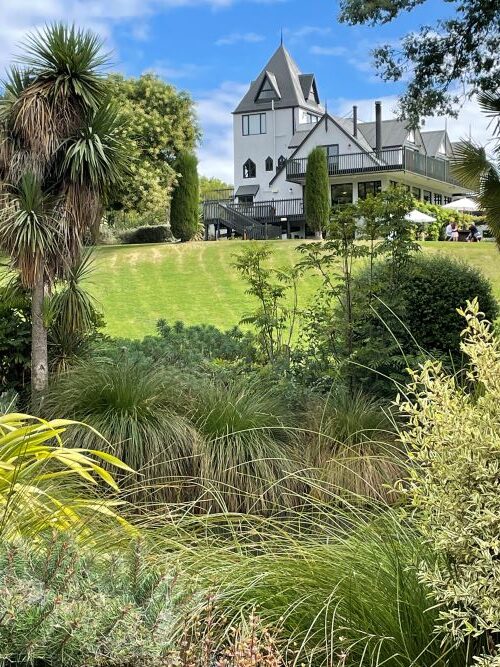
A word about the wines. Riesling is the flagship, closely followed by Pinot Noir. The wines are designed with intention to food, and have savory characteristics that promote thoughtful pairings. Trying the dry-sweet range of Rieslings on offer will give you an understanding of this noble grape and its South Island expression.
RECOMMENDED: Take a Guided Waipara Wine Trail Tour That Includes Pegasus Bay
Dine
There are many food options at each of these wineries and others, ranging from high end cuisine and wine at Black Estate, to casual outdoor dining at Waipara Springs Winery. You can order a wine and picnic in the lavish gardens at Pegasus Bay, as well as take away savory meat pies for a stay-in dinner and do your own wine pairing. Ask your innkeepers for dinner recommendations as there are some public houses in the area.
Stay
Depending on budget, you might consider staying at one of the winery inns, such as at Black Estate. After touring and tasting all day, you may be inclined to stay at an Airbnb nearby and make your own meal and drink some of the great wines you’ve purchased.
Play
Taste wine, be happy. Find a hiking trail, celebrate wine country living. Then head north to Kaikoura, a popular beach town. Eat seafood, walk and bike the trails, hire a helicopter tour, look for seals and albatross (good luck), and take the scenic drive north en route to your next wine destination, Marlborough.
Marlborough and Blenheim
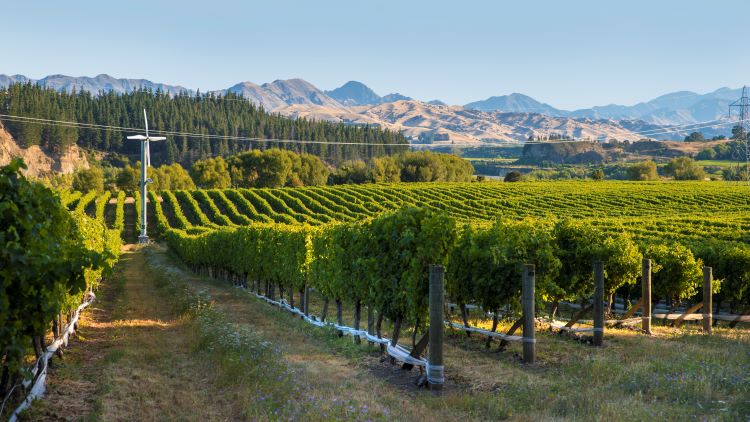
Marlborough is the largest wine region in New Zealand by far, both by volume and number of wineries, and 2023 marks its 50th Anniversary of commercial plantings. Blenheim, the largest city is reminiscent of Napa 40 years ago or McMinnville in Willamette Valley today. New Zealand is the third largest exporter of wine to the U.S., after France and Italy, and Marlborough wines make up the lion’s share of that. Traveling here, visiting cellar doors, and tasting the good stuff they don’t export to the U.S. is eye opening.
RELATED: 7 Top New Zealand Wine Regions to Consider Visiting This Year
Marcus Pickens of Wine Marlborough couldn’t be more enthusiast about the future.
“Marlborough is a great place to begin your exploration of the South Island. We are blessed with high sunshine hours and our wine region is mostly on valley floors, meaning no big hills to climb if you are wine touring by bike, which is very popular. The ‘cellar doors’ (our tasting rooms) are fairly compact and often clustered together. There are approximately 30, each with different characteristics. Many have been operating as cellar doors for decades and are experts at hosting and ensuring you enjoy your experience. Kiwis are pretty laid back, so even if wine tasting is new to you, you will not feel out of your depth. All experiences are different so many people will visit between 2-4 on a day’s outing. The keener can do this for a few days.”
And, there’s more to discover than flagship Sauvignon Blancs.
If you are visiting from the US, UK, Australia, Hong Kong, Singapore, or Japan, you can order wines direct from over 130 NZ wineries and have them shipped direct to you at home. Ask if the winery ships through Wine Collective Direct.
Sip
Te Whare Ra
56 Anglesea Street, Renwick 7204, New Zealand
The original plantings from 1979 are the oldest vines in Marlborough. Anna and Jason Flowerday purchased the property in 2003, and got their hands dirty, literally. Anna is from a 6th generation Australian winemaking family, and husband Jason is 3rd generation in the Marlborough region. The wine business is literally in their collective DNA. Anna drily quips, “owning a winery is not a lifestyle, but rather a life sentence.”
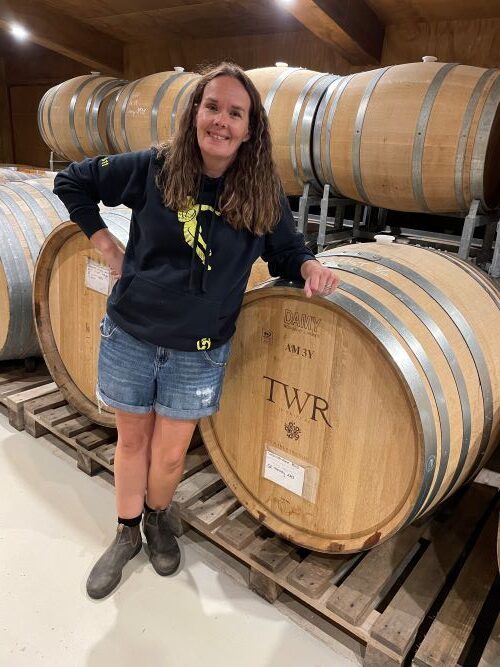
The 25 acres of TWR vineyards are organic and biodynamic farmed on the philosophy that soil health matters and “Good Dirt” results in great wine. You’ll find this winegrowing approach proven out in the quality of their Gewürztraminer, Pinot Gris, Chardonnay, Riesling and Pinot Noir wines. And of course, they also make Sauvignon Blanc. This is Marlborough after all.
Wine tasting is available by appointment Monday through Friday, and sometimes on weekends. There is no charge per local liquor license restrictions, so patronize the visit with bottle purchases.
Dogpoint
797 New Renwick Road, Blenheim 7272, New Zealand
Dogpoint Winery was founded by one of Marlborough’s wine pioneers, current owner Ivan Sutherland, along with his wife Margaret in the late 1970s, and continues to be a leader in certified sustainable growing and winemaking. Many of the Marlborough founding families, including Dogpoint, are turning over the reins to the next generation. The legacy continues.
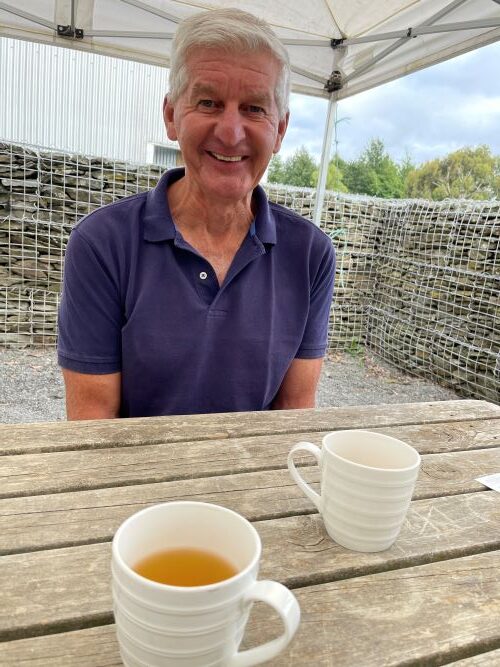
Ivan, who grew up in a local farming family, takes a quiet and humble approach to promoting the brand says. If you ask, he will say they aren’t a “Flash Harry” type of winery, but prefer to focus on adherence to uncompromising excellence, even at the expense of profitability. This is apparent in the quality of their organically produced Sauvignon Blancs and Pinot Noirs.
Be sure to schedule your tasting appointment ahead of time, and don’t miss the historic Sheep building, an over 100 year old Hawksbury sheep station woolshed from the early settler days, now used for shearing Dogpoint’s estate sheep. Lodging is available on the property. The views are stunning and hiking the 620 acres estate (250 hectares under organic vine) can take up most of the day.
Tastings are at no charge, so show your love by buying wine to enjoy in NZ, or sending wine home. Dogpoint is widely distributed worldwide.
Whitehaven
39 Pauls Road, Woodbourne, Blenheim 7273, New Zealand
Sue and Greg White founded their namesake winery in the mid-1990s. Sue and family carry on the tradition of production excellence, family values and hospitality, by offering premium wines at approachable prices for both entry and fine wine level wine lovers. Ask for a side by side tasting of the estate and “Greg’s” Sauvignon Blancs and Pinot Noirs.
Whitehaven is a member producer of Methode Traditionnelle Marlborough, a cadre of wineries making sparkling wine in the classic Champagne style.
RELATED: Discover Different Types of Sparkling Wines from Around the World
They are also a registered member of Appellation Marlborough Wine – 100% grown in Marlborough and bottled in New Zealand – producing almost 1 million cases, and is one of the fast-growing premium wine labels in the U.S.A. Be sure to sip their rosé bubbles lakeside at the tasting room at The Vines Villages. Bubbles will make you happy.
Tastings range from $10-15 NZ for four wines. Pairing platters of local cheeses, meats and pâté are available onsite.
FROMM
15 Godfrey Road, Fairhall 7272, New Zealand
FROMM is a small privately owned producer of Chardonnay, Pinot Noir, Syrah, Malbec and other varieties. The 15-acre estate was founded in the early 1990s, and sustainability is front and center. Water management and irrigation control are among the many responsible environmental practices at the estate vineyards. This means FROMM is primarily dry farmed, a means of promoting vine health and independence.
RECOMMENDED: Take a Full-Day Tour of Marlborough Led by a Winemaker that Includes FROMM
The one thing to know about FROMM is that when they say “hand crafted” they mean it. They harvest their estate vineyards by hand, without the use of machines, and hand sort grapes during harvest, use native yeasts during fermentation, while doing little or nothing to manipulate the wine. Their winemaking approach is as close to “natural” as you can get.
Side by side tastings of the Clayvin single vineyard Chardonnay and the Abel Pinot Noirs are recommended, but don’t miss their estate Syrah wines, which are somewhat unique to the Marlborough Valley. The cellar door is open Daily 1-4pm.
Clos Henri Vineyard
639 State Highway 63, Renwick 7271, New Zealand
The Bourgeois family migrated from Sancerre in the Loire region of France to establish their Marlborough brand in 2000, followed by a first vintage in 2003. Naturally, Sauvignon Blanc would be front and center, along with 10 generations of winemaking traditions from their home vineyards and winery estate in Chavignol, France. And yes, they still produce beautiful Sauvignon Blanc and Pinot Noir, and each property has historic chapels! Check out the vineyard map and ask for the “Stones and Clay” comparative tasting. If you ever wanted to understand how different the same grape made in two different places can be – France and New Zealand – and the French term “Terroir,” here is your opportunity.
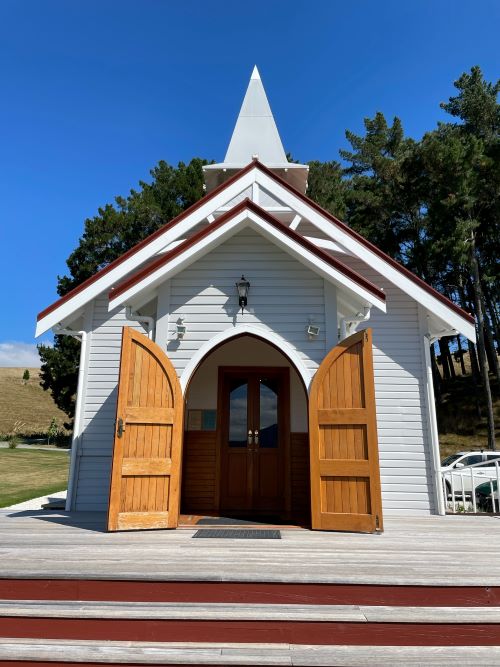
Tasting by appointment is a good idea, as you will be in the chapel and seating is somewhat limited in high season. However, they do accept walk-in visitors. Tastings are $15 for five wines with a five dollar credit per bottle purchase per person.
Huia
22 Boyces Road, Rapaura 7273, New Zealand
The Huia bird is an extinct tropical bird native to New Zealand, and the namesake for the winery. The vineyard, planted in the mid-1990s was formerly a citrus and apple orchard. Eliza the cellar door manager likes to say that Sauvignon Blanc pays the bills but sparkling wines are the ongoing passion of founder Claire Allan.
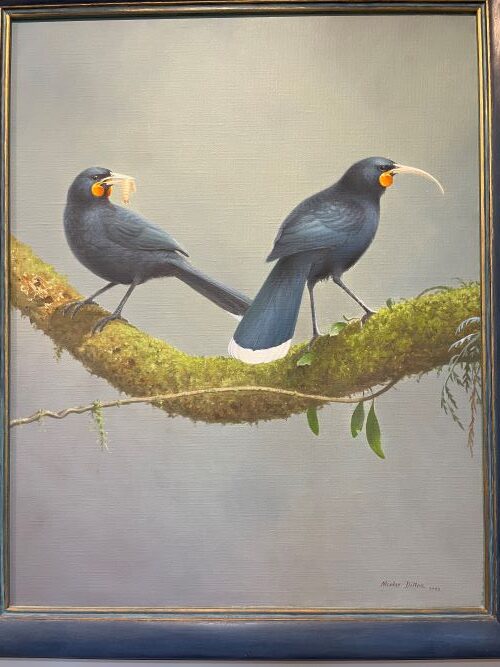
The Maori people have a saying about being stewards and guardians of their place – “The land that we stand on” – which has been adopted by Huia with sustainable growing certifications such as Organic Bio Grow, which regulates vineyard practices and Appellation Marlborough Wine which ensures purity of fruit and place.
Tasting fees are $10 for five wines, and is waived with a purchase. If you’re out and about cycling, this winery is on the circuit, so feel free to drop in. Be sure to try the sparkling and all whites on offer. These are restrained thoughtfully crafted wines. The cellar door is open daily 10:30am-4:30pm during the summer.
Dine
Winery lunches are a pleasure in Marlborough. Try St. Clair Family Estate Restaurant for an affordable upscale experience, or Wairau River, Allan Scott and Wither Hills.
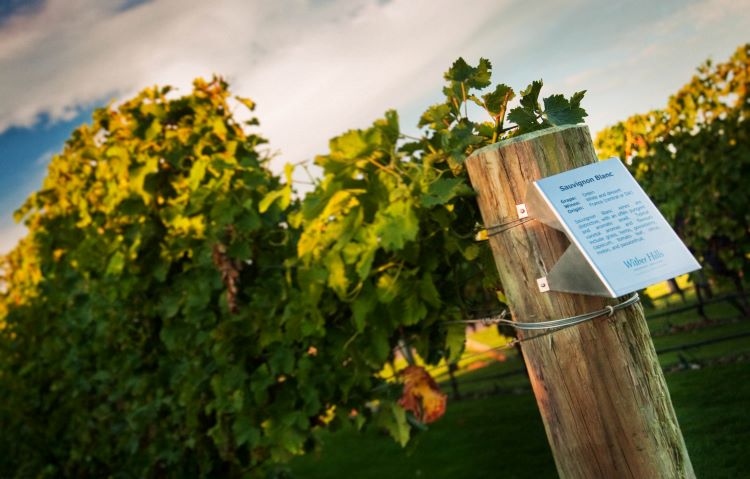
Dinners require a bit of planning as many restaurants are closed Sunday, Monday and possibly Tuesdays. A reliable option for decent pub food in downtown Blenheim is Good Home. Frank’s and Gramado’s are recommended by locals, as is Scotch for cocktails and small plates.
Stay
Lodging during the peak wine tasting season – November to April – is competitive, so plan ahead. Blenheim has hotel options, but most of the wineries are in the Renwick area, so staying in wine country is appealing. Browse some of these stunning vineyard hotel options in Marlborough this year.
Play
The Vines Village is a nice respite while touring, with wine tasting, gin tasting and more at the Village Café, Quilter’s Barn and Lakeside patio tables.
You may want a break from all imbibing. There are river walks through Blenheim for strolling, and many bike tour operators and trails. Don’t miss the Marlborough Museum which features the history of wine, and the Aviation Museum which sports some of Peter Jackson’s autos.
Picton and QC Track
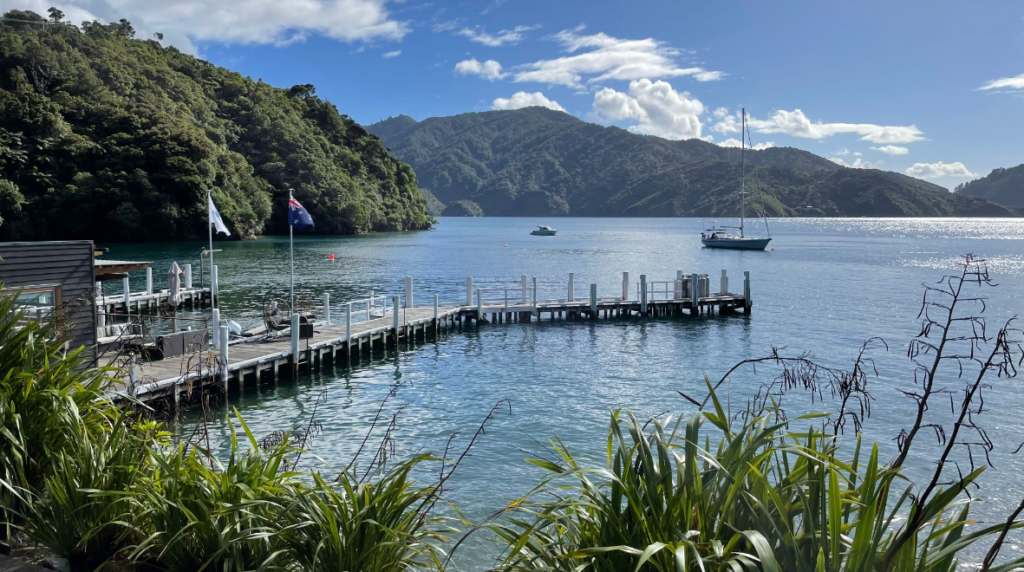
Planning on doing some tramping on the Queen Charlotte Track (QC Track) in Marlborough Sound? You’ll need to stage the night prior in Picton, a charming ferry stop village perfectly serviceable for an overnight. Arrive in time to confirm your water taxi schedule and pick up tickets, vouchers and instructions.
Once you’re sorted out, check into your room. There are many options. Try Harbor View Motel for expensive digs with view decks. You can leave a bag or two including wine purchased from your Marborough touring. For more expensive lodging, try the Picton Yacht Club across the street. Both are a five-minute walk into town for strolling, shopping, beers, and of course local wine. Dinner at Oxley’s is highly recommended and the food and service is top shelf. If you arrive early enough and want to stretch and stroll, walk to Bob’s Bay, one hour return.
The Queen Charlotte track is about 40 miles of hut-to-hut hiking, and there are upscale resorts along the way. The ferry service provides bag drops daily so you can hike with nothing but the basics. Beachcomber cruises can also help you organize an ideal walk from Picton, with a round-trip boat ride included.
Many people start their treks at Ships Cove or Resolution Bay, with an overnight at Furneaux Lodge, a lovely multi generation resort with great service, food, and a fab wine list. Bay of Many Coves Resort makes for a great splurge although may only be available by boat. Check with the resort and other hikers to see if their footpath descending from the QC track is safe and passable.
Nelson and Abel Tasman Park
Nelson is a lovely seaside village with some of the best weather in New Zealand. It is also the geographic center of the country. A hike up to the top of the Botanic Gardens places you at the exact spot, and awards one with views across Tasman Bay and the urban center.
Aside from its charm and walkable historic center, Nelson is also a staging ground for hikes to Able Tasman National Park. The wharf in Mapua is worth a stop en route for a Mapua Smokehouse Fish and chips lunch, or in the afternoon and evening at Golden Bear Brewing for beers and snacks, or Rimu Wine Bar for wine tastings from Nelson area wineries and other New Zealand regions.
Day trips to Abel Tasman are quite easy and walking in the park is well-defined on boardwalks and signed paths. There are plenty of Eco-Tour agencies in Nelson and along the way north to the park, where you can arrange rental kayaks, bicycles or a combination thereof. Trekking into the park and staying overnight is also very popular. If you’re feeling especially adventurous, skydive over Abel Tasman.
Back in Nelson, avoid the typical pub fare, and try Urban Oyster Bar and eatery in the central downtown district. They offer small plates to share, several brews on draft, and a great list of wines by the glass and bottle. Service is excellent and this is a delicious and fun stop. Other non grub options include Hawkers House and Hopgoods & Company.
The Wild West Coast
Maruia Hot Springs
Departing Nelson on State Road 6 south, takes you through Murchison to the Maruia Hot Springs, an entirely off grid low key groovy Zen-ish resort with blackish brackish mineral hot pools and stunning mountains scenery. The fixed price restaurant is worth trying and also your only dinner option.
Double back through Reefton to Westport for an outstanding coastal drive – The Great Coast Road – which heads south to Hokitika, locally known as Hoki. Don’t miss Pancake Rocks in Paparoa National Park. There’s no easy way to describe this 30-to-60-minute coastal walking experience. Just be there yourself.
Hokitika
Hoki was one of the gold rush locations in the mid-1800s, and now an artists and crafts center including greenstone and jade jewelry design, as well as a hiking and cycling adventure destination. You can read Eleanor Catton’s mystery novel “Lumineries” about gold rush times in Hokitika. The big event of the year – Hokitika Wildfoods Festival – takes place in March and draws thousands. See details below.
Stay at Shining Star Motel Resort, and try to snag a beach front room. Ask about their Glow Worms. If you don’t mind doing something touristy, visit the National Kiwi Center, and Sock World Museum.
Wild Food Festival
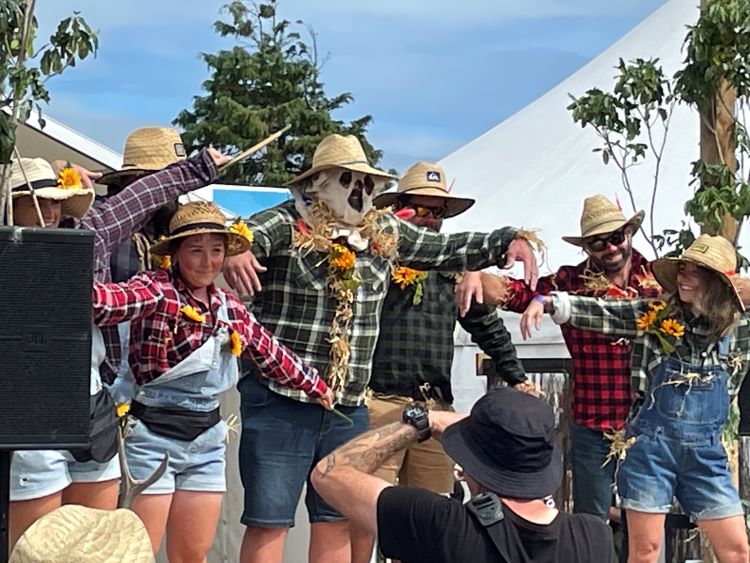
The festival started over 30 years ago to celebrate the food and produce from the wild tropical west coast of NZ. Let’s see, try the rabbit, venison, boar and lamb skewers, and don’t miss the mountain oysters! Enjoy ongoing live music and lively locals.
Franz Joseph and Glacier Country
Ever wonder if the earth is really warming? Do this before-after test. You’ll find before photos in town, and compare to your glacier hike after photos. A little scary, isn’t it? Franz Joseph and Fox Glacier are worth a day or so, depending on how avid you are as a hiker. Guided hike options are available to book in advance. Another popular way to see these glaciers is via helicopter.
You’re likely en route to Queenstown, about a 5-hour drive south, and base for trekking and an embarrassment of adventure activities.
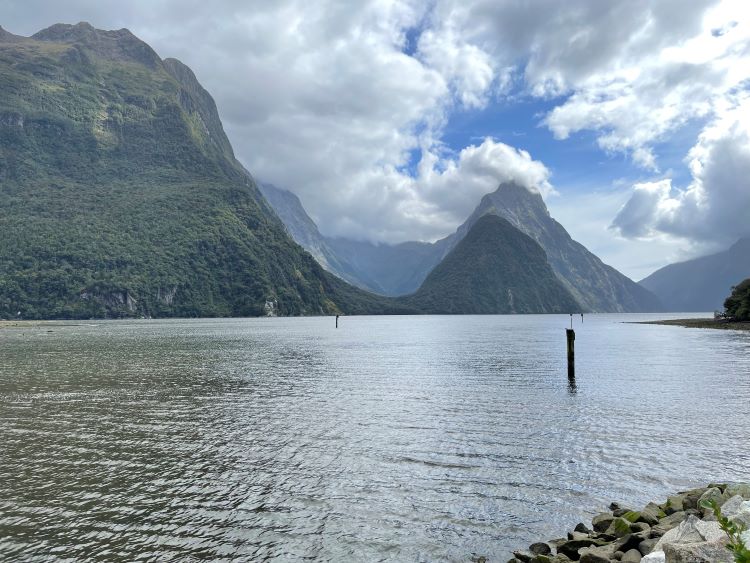
Te Anu and Milford Sound
Ready to leave Queenstown, the Cancun of the South Pacific? Head to Te Anu, the headquarters of one of the most beautiful places on earth. Te Anu is the perfect staging ground for adventures within Fiordlands National Park, a UNESCO World Heritage-designated location. The beauty is breathtaking and unparalleled.
If you overnight, be sure to see the amazing 30-minute video at the cinema, located in the center of town. It is helicopter filmed and provides a glimpse into this area’s profound beauty. You can enjoy a beer, drink or a glass Kiwi Sauvie while oogling at this incredible movie. There are lots of options in town for dinner, as many visitors overnight plan their expeditions. Most people are heading north on the road to Milford Sound for flights or helicopter day trips and overnight cruises in the sound. Fiordland Discovery offers a splash out experience for an overnight cruise of the Milford Sound, worth every copper if you decide to have a go.
Queenstown and Central Otago Wine Region
Bustling lakeshore Queenstown is experiencing a major do over with lots of construction projects started during the Covid era and running tardy. Despite that consideration, there’s lots to do, not the least of which is wine touring, just 30 minutes to the Central Otago wineries.
Aside from all the insanely adventurous adrenaline pumping packaged touring options, one of the great pleasures of Queenstown are in the Queenstown Gardens and on the Lakeshore path. You can pop in and out of the CBD throughout the day as needed, knowing respite is nearby. Be sure to just sit and relax on a shaded bench, and do check out the Queenstown Bowling Club for live competitive games.
Sip
There are many fun pub options. We liked Lakeside Pub on Wharf for views of all the action, and The Bath House, one of the oldest Queenstown institutions, for lunch on the lake or wine or drinks before dinner.
Dine
Captains Restaurant & Bar on The Mall offers Steak and lots of fresh seafood options. If you want to dine on the wharf, Finz and Public Kitchen are easy options (with advance reservations). A fine and unique breakfast can be had at Odd Saint in the CBD.
Stay
Book advance during peak season (December to March), as Queenstown seems to be on the world’s bucket list of places to visit. AirBnb is a good option if you’re one to eat some of your meals at home. Otherwise, TripAdvisor provides plenty of hotel options for all budgets to peruse.
Play
In addition to wine country travel, bungee jumping, jet boating, river surfing, lake rafting, jet skiing, canyon paragliding, gondola rides, horse trekking, hot pools chilling, Lake Wakatipu cruising, shark boating, flights over Milford sound, bike touring, hot air ballooning, are all available, and they all provide free ice. If you’re interested in having any of these epic experiences arranged ahead of time, again, feel free to contact us at bookings@winetraveler.com, or, browse and book at your leisure these experiences in and around Queenstown. Remember, all bookings using code WINETRAVELER15 are available at 15% off for a limited time.
South Island and Queenstown are also known for “Greenstone”, the Maori translation for Jade. We found The Gift Centre, one of the original and still family-owned purveyors of authentic Kiwi greenstone in the downtown central business district. The Gift Centre staff are also very informed and helpful.
Ready to get out of Queenstown CBD? Head north on Highway 6 up the east shore of Lake Wakatipu toward Glenorchy. You will be rewarded with some of the world’s greatest views and dramatic scenery. Bring lunch.
Your day hike destination should be the Routeburn Track, a World Heritage preservation site in Mt. Aspiring National Park. Day tramp walks range from 1-4 hours including the return trek. You can also overnight camp or hut stay on your own, reservations required to hold your spot. For more luxe and convenience check out the spendy lodge-trekking options from Ultimate Hikes.
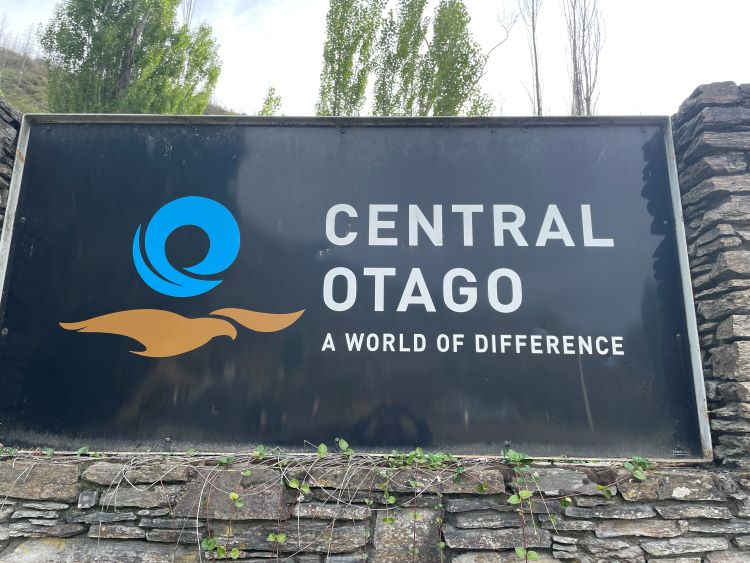
Central Otago Wineries & Gibbston
The most southern wine region in the world, roughly at the 45th parallel (similar to Burgundy and Willamette Valley in the northern parallel) has only been producing commercially viable wines since the 1980s. Not surprisingly, Pinot Noir reigns queen (with Chardonnay on the rise) in this arid rugged extremely sloping environment.
Original plantings by Alan Brady for Gibbston Valley Winery happened in Gibbston in 1987, and today vines spread out into Bannockburn and Cromwell, which might be said to be the Central Valley of the region. Central Otago is relatively undiscovered (with most people focused on adventure tourism in Queenstown), and merits your time.
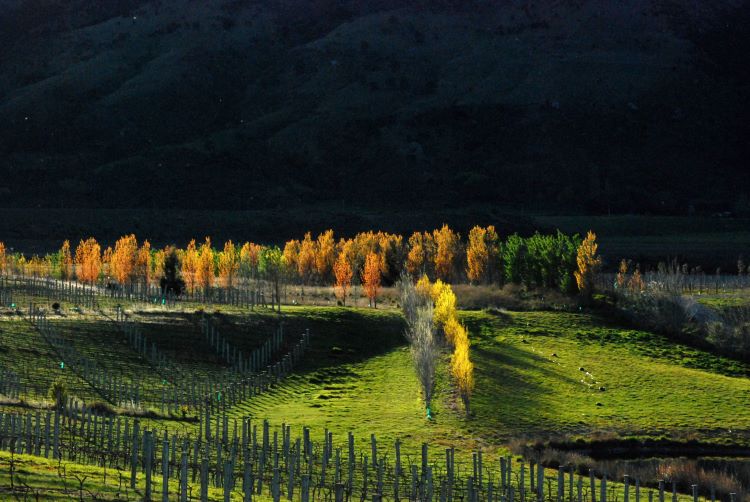
“The Grandeur of Central Otago is something that pictures and words cannot express”, says Jake Tipler of Central Otago Winegrowers Association. “There is no bad time to visit. In Winter, the snow-capped mountains can be enjoyed from a distance if you’re not into skiing, while sipping a fine glass of Pinot at one of our 50+ cellar doors. In Autumn, we have some of the most spectacular fall colours in the trees and vines which is a spectacle that everyone should enjoy at least once in their life. Spring and Summer (mostly warm) weather promise new growth and a burgeoning vines. And sustainable tourism will be an ever-increasing theme in the coming years, building upon and enhancing our beautiful environment.”
Sip
Te Kano Winery
92 Felton Road, Bannockburn 9384, New Zealand
Te Kano means the seed in Maori, and the Lloyd Family didn’t take naming the winery lightly. In fact, according to general manager Nick Hunter, Keith and Rhonda decided to regenerate parts of the 110 hectares (270 acres) of land they fell in love with in 2016, before they planted their vineyards.
The seed itself comes from a Kowhai (pronounced Ko-Fi) tree standing sentinel in the vineyards. Seeds from this and other locally sourced native plants are harvested and nursery-grown on site. 1,000 young Kowhai trees and some 10,000 other native plants have been planted during “staff replanting days.”
Over 400 Kowhai saplings have been planted to date, along with 4,000 other native plants. The project continues with one full time staff dedicated to land stewardship and eco programs, and another to integrating vineyard management and organic certification initiatives.
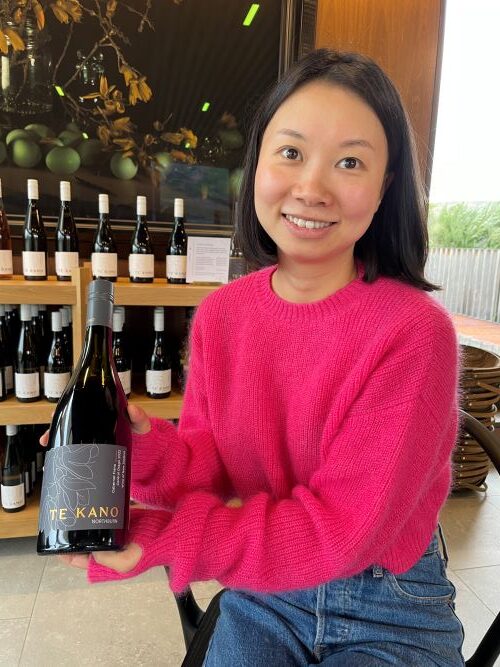
Te Kano is a 12k case winery and growing. Their current releases include a stellar Pinot Gris grown on chalky limestone soils, a fruit-acid balanced citrus-noted Sauvignon Blanc, and delightful Pinot Noirs that showcase site minerality. But the show stealer surprise is their Cabernet Franc from their Northburn Vineyard, the focus of much of the winery’s regenerative efforts. You’ll find three series of wines that pair with the winery mission statement – Life (aromatic blends), Land (vineyard specific), and Legacy (will not be made until the seeds of their efforts come to fruition).
RECOMMENDED: Book a Full-Day Wine Tasting Trip to Central Otago that Includes a Visit to Te Kano
The tasting Room is open Thursday to Monday 11-5pm, but try to arrange a tasting by appointment so you don’t miss how this story and wines turn out.
Carrick Winery & Restaurant
247 Cairnmuir Road, Bannockburn, Cromwell 9384, New Zealand
“Tieing the Knot” at Carrick is not a reference to getting married, but rather to the Carrick Nautical Knot, which in this case represents the winery mission to bring together land, people and the wines. Carrick is one of the few fully integrated winery and restaurant operations, with onsite winery, estate vineyards, a tasting room and restaurant, with a locally sourced menu paired with wine suggestions.
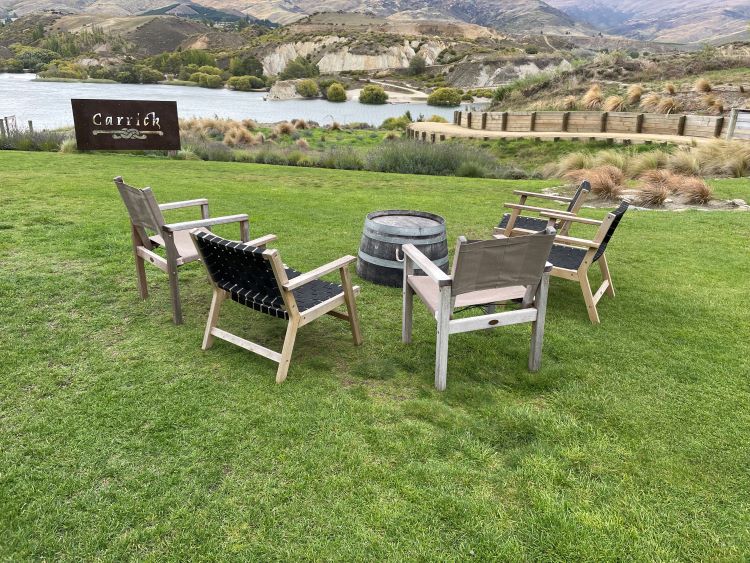
The winery was founded in 1994 and all 24 hectares were certified organic by 2008. Tony and Allison Cleland purchased the property in 2020 when it fell into receivership. They’re cycling enthusiasts who discovered the restaurant and became passionate customers that decided to ride to the rescue. Their passion and vision was rewarded when the Lake Dunstan cycle trail was completed shortly thereafter, making the restaurant a must-stop for other cycling and wandering wine and food fanatics.
Try the salmon tartare paired with Pinot Blanc, Cioppino and Chardonnay, and the duck confit paired with any of their Pinot Noirs.
Felton Road
Felton Road, Bannockburn 9384, New Zealand
The iconic 12,500 case Felton Road, named after its location at road’s end – is the second career of a well-known former London arts and events creative director – Nigel Greening. Nigel’s contribution to the growth and success of the Central Otago wine region was simply to have a strategic plan, and a bit of luck. Nigel and founding winemaking Blair Walter reverse engineered a plan to sustainably grow (biodynamic and organic certified) and profitably produce premium wine, with global distribution. And they did it using the old French “vigneron” model of estate owned vineyards and total control of production and sales.
RELATED: Take a Look at This Interview with Felton Road’s Nigel Greening
International recognition and that bit of luck came in the 1999 after the all too famous Robert Parker tasted wines sent by the U.S. distributor (1997 vintage), and suddenly declared Central Otago a legit Pinot Noir-producing region after tasting Felton Road wines. To this day, the winery is often found in the top 20 brands globally.
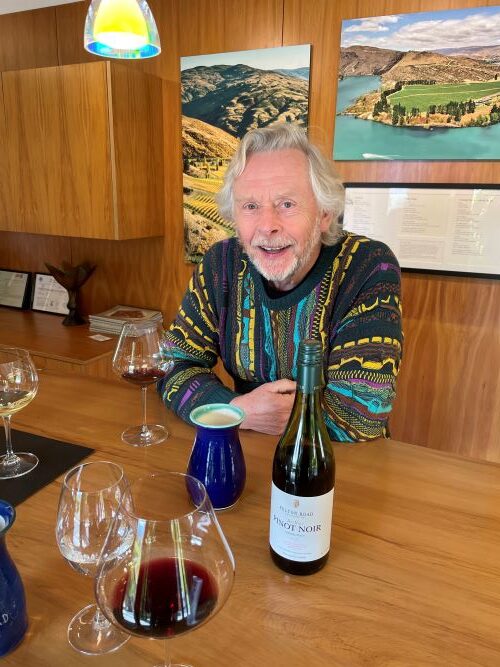
The tasting room is open by appointment only, and there is no charge for the experience. However, they require a two-hour commitment to tour the vineyards, winery, and taste through the wines. This option is recommended for those that are interested in learning about the region, and specifically the role Felton Road winery has played in its success.
Be sure to try the Block 2 Chardonnay and ask about how it’s made. The winery’s latest Pinot Noir project is from the youthful MacMuir Vineyard whose savory complex flavors express a long persistent finish, echoing Nigel’s plan and legacy.
Quartz Reef
8 Hughes Crescent, Cromwell 9310, New Zealand
Pioneering winemaker Rudi Bauer was the first to plant vineyards in the Bendigo region in 1998, after working for Mission and the well know Rippon Winery, the first biodynamic grower of Pinot Noir. Quartz Reef is the only sparkling wine house in Central Otago, producing biodynamically and organically certified fruit for their onsite bubbles program. If you visit, you’ll meet other travelers seeking out their classic method brut and rosé sparklers.
Despite its reputation, don’t expect glitz and glamour at the cellar door. It’s a simple tasting room attached to the production facility in downtown Cromwell. You’ll taste 4 wines all estate grown from their 30 hectare vineyards. They’re open Monday through Friday from 12 to 4 PM. Simply pop in, taste and enjoy.
Valli Wine
2330 Gibbston Valley, Gibbston 9371, New Zealand
Grant Taylor is one of the early stock of modest pioneer winemakers in “Central,” making wine for several brands before starting his own label, the 7k case Valli Wine, established in 1998.
Grant and now winemaker Jen Parr, an American from Oregon, believe the story of Central Otago is one of its unique sub regions. To that end, Valli works with four unique vineyards in the key growing regions – estate owned Gibbston and Waitaki, and also Bannockburn and Bendigo Vineyards – producing Pinot Noir from each annually. This makes for a terrific horizontal tasting, comparing different soil types. I.E: Find your favorite terroir.
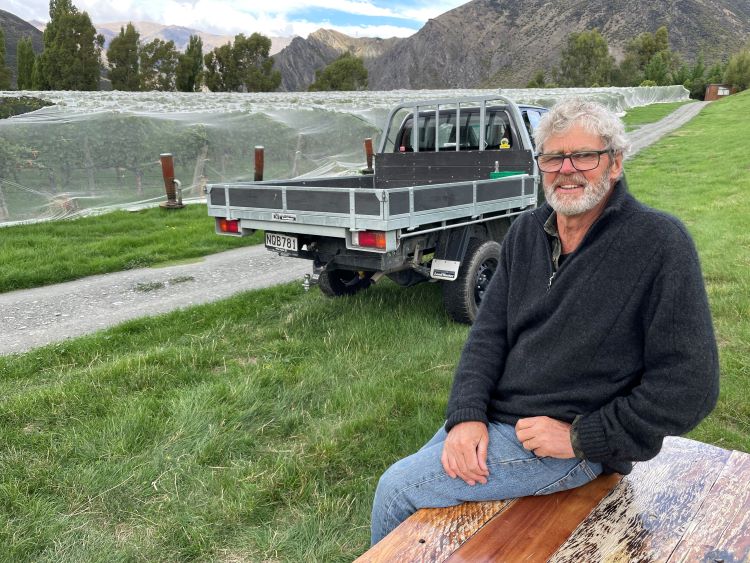
You can taste Valli Wines at Kinross, a cooperative tasting room adjacent to Valli’s Gibbston Vineyard.
Coal Pit Winery
121 Coal Pit Road, Gibbston 9371, New Zealand
Rosie Dunphy, a descendant of the first Maori Bishop and early conservationists, purchased the Coal Pit property in the early 2000s, where plantings of Pinot Noir and Sauvignon Blanc grapes date back to 1994.
The seven hectares organic estate vineyard (3,000 cases produced) is located on a total of 12 hectares of native forest land, which includes winery, residences and a native tree planting block. The property became recently certified organic under BioGro in March 2023.
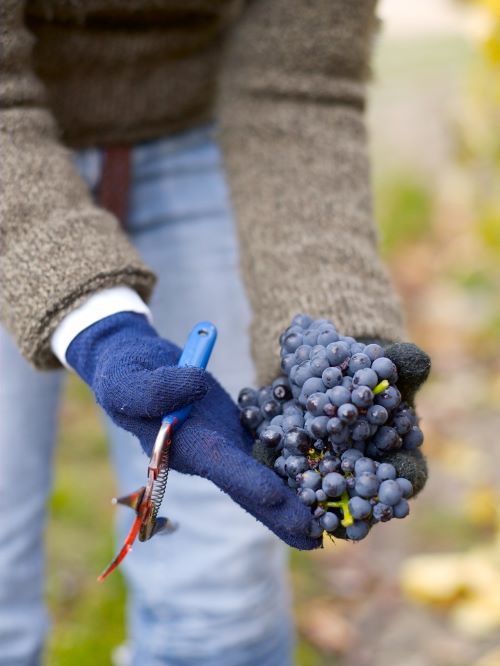
Anika Willner, an American expat from Ohio has been the chief winemaker since 2019. She’s done extensive vintage work in South Africa, Europe, Australia, and at Adelsheim in Willamette Valley. Anika says the reason she joined the winery is Rosie’s perseverance of vision and focus on family and stewardship of the land.
Try the savory Pinot Noirs produced using minimal inputs and wild ferments. The rosé of Pinot Noir label sports the feather of the now distinct Huia Bird, symbolic to Maori and conservationists. It’s perfect on one of Central’s hot summer porch days. All Coal Pit labels are an homage to the Dunphy family – Rosie’s Father and Grandchildren – and honor the family lineage and legacy.
Taste and purchase the wines at Kinross (details below), or purchase directly from the winery online and join their exclusive wine club program for discounts and shipments.
Kinross Cellar Door
2300 Gibbston Valley, Queenstown 9371, New Zealand
You can taste multiple wineries at this cooperative tasting room, including Valli Wines and Coat Pit Wineries current releases.
Dine
Gibbston Tavern, a former miners haunt from the mid-1850s, and now a place to chill out for pizza and a brew, gin and vodka tasting and some local ambience. Try Carrick in Bannockburn (see above), Gibbston Valley Winery & Restaurant, and Panners Bar and Kitchen in Cromwell, a gold mine-themed affair for lunch or dinner. The Fork and Tap in downtown Arrowtown is a fun, local and tasty option.
Stay
Some of the wineries we’ve mentioned also have inns onsite, and nothing is nicer than being surrounded by vineyards while you relax and enjoy the wine bounty from your day’s discoveries. Otherwise, AirBnb is a great option if you’re willing to prep your own dinner, which is not a bad idea given the dearth of restaurants open at night. Otherwise, if you’re willing to splurge a bit, there are a number of upscale hotels (vineyards and otherwise), throughout Central Otago to use as a base.
Play
Arrowtown is a fun diversion, a beautifully restored old gold mining town, filled with upscale shops and eateries. There’s also the Gibbston River Trail for light hiking. Whether or not you’re up for bungee jumping, you should visit A.J. Hackett’s, the original site to popularize diving to certain death on a rubber band. A saner option is to search out rental bikes from one of many local providers and pumping around the many trails and paths you’d find available. Going Blue offers biking between the vines and self-guided experiences to explore Arrowtown and Gibbston while getting some exercise.
Final Note: Want a New Zealand Airlines onboard movie suggestion? Watch “Whetu Marama – Bright Star,” about Hek Busby, the Wayfinder of the Pacific and his significance to the Maori people and navigation.
Frequently Asked Questions about Visiting South Island New Zealand
Featured image courtesy New Zealand Winegrowers Inc, FROMM Winery.
You are reading “Travel Guide & Itinerary: New Zealand South Island” Back to top
If you enjoyed this guide, make sure you register to become a Winetraveler for free! You’ll get access to all of our content and receive useful guides and inspiration for travel around the world. Be sure to follow along with us on Twitter and Instagram as we continue to feature more exciting destinations.
